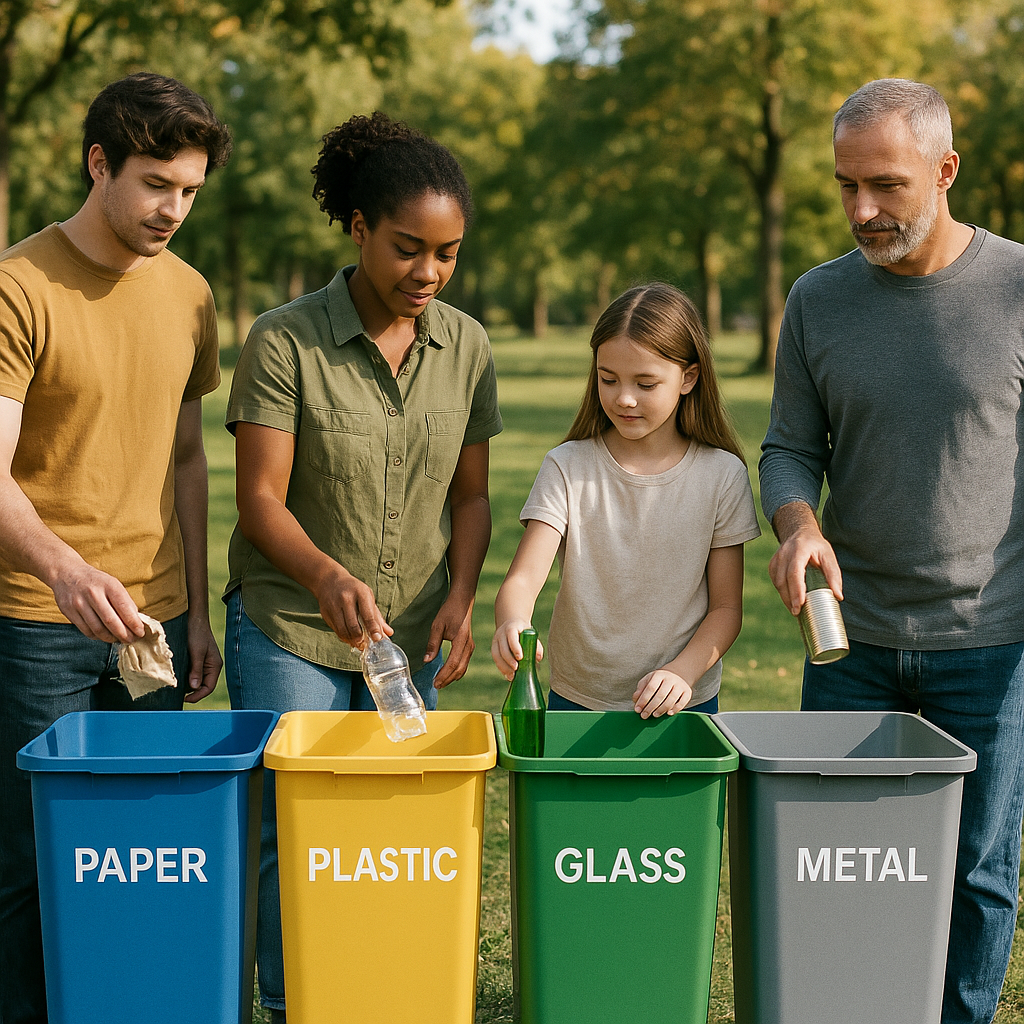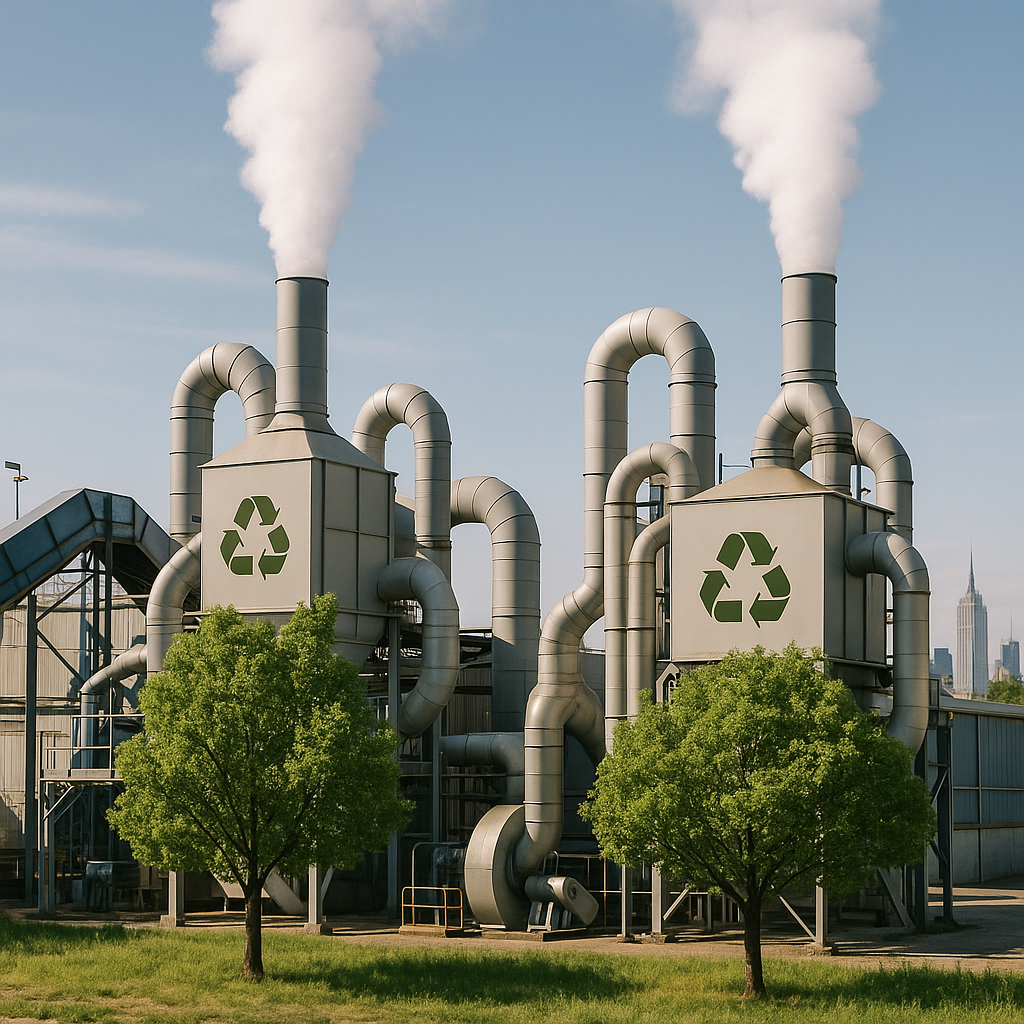5901 Botham Jean Blvd, Dallas, TX 75215
Recycling Waste Disposal: Methods and Climate Impact
September 28, 2025Recycling transforms waste materials destined for the trash into valuable new products. This important process involves collecting, sorting, and processing recyclable materials that would otherwise add to growing landfills. Every recycled can, bottle, and cardboard box represents resources saved and pollution avoided.
Recycling is a critical part of modern waste management systems. It creates a continuous loop symbolized by the familiar chasing arrows we see on recyclable products. This process helps communities and businesses reduce their environmental impact while conserving limited natural resources.
Effective recycling starts with properly separating materials. Paper, glass, metals, and certain plastics can be processed in various ways to break them down into raw materials. These materials then become the foundation for new products, completing the recycling loop when consumers buy items made from recycled content.
What Are the Main Types of Recycling?

Recycling methods vary significantly depending on the materials being processed and their intended end use. The recycling industry categorizes these methods into three main types: mechanical, energy, and chemical recycling. Each plays an essential role in diverting waste from landfills and conserving valuable resources.
Mechanical Recycling
Mechanical recycling is the most common and traditional recycling method. It involves processing materials into new products without altering their chemical structure. This process typically includes sorting, cleaning, shredding, melting, and reforming materials.
For plastics, mechanical recycling is particularly effective with materials like PET (e.g., water bottles) and HDPE (e.g., detergent containers). After collection and sorting, these plastics are washed, ground into flakes, melted, and formed into pellets. These pellets become the raw material for manufacturing new products like fleece clothing, outdoor furniture, and even new bottles.
Paper and cardboard undergo similar mechanical processes. They are pulped and cleaned of contaminants like staples and tape, then reformed into new paper products. One ton of recycled paper can save approximately 17 trees and uses 50% less water than producing new paper from raw materials.
Energy Recycling
Energy recycling, also known as waste-to-energy or energy recovery, converts non-recyclable waste materials into usable heat, electricity, or fuel. The most common form involves incinerating waste at high temperatures under controlled conditions.
Modern energy recycling facilities use sophisticated pollution control systems to minimize environmental impact. These plants burn waste at temperatures exceeding 1,800°F, generating steam that drives turbines to produce electricity. A single facility can power thousands of homes while reducing the volume of waste by up to 90%.
Sweden has pioneered energy recycling to such an extent that they import waste from other countries to fuel their energy recovery plants. These facilities provide district heating to communities and have significantly reduced their dependence on fossil fuels.
Chemical Recycling
Chemical recycling breaks down materials at the molecular level through various chemical processes. This method is valuable for plastics that cannot be effectively recycled through mechanical means.
During chemical recycling, complex polymers are converted back into simpler molecules through processes like pyrolysis, gasification, or depolymerization. These base molecules can then be used to create entirely new plastics with properties identical to virgin materials.
One promising application is converting mixed plastic waste into fuel. Through pyrolysis, difficult-to-recycle plastic items like food wrappers can be transformed into diesel fuel or other petroleum products. Companies like PureCycle Technologies have developed processes to restore recycled polypropylene to virgin-like quality, allowing it to be used in food-grade packaging.
Chemical recycling offers a solution for materials that have reached the end of their mechanical recycling potential. After several cycles of mechanical recycling, materials often degrade in quality. Chemical recycling resets this degradation, giving materials new life.
Each recycling method serves specific purposes in our waste management systems. While mechanical recycling remains the most widely used approach for common recyclables, energy and chemical recycling provide solutions for materials that would otherwise end up in landfills. Together, these three approaches form a comprehensive strategy for managing waste and conserving resources sustainably.
What Are the 5 R’s of Waste Management?
The 5 R’s of waste management form a structured approach enabling businesses and individuals to minimize their environmental impact by addressing waste at every stage. This framework offers a hierarchy of actions that, when followed in sequence, can significantly reduce the waste produced and resources consumed.
Refuse: The Foundation of Waste Reduction
Leading the waste management hierarchy is the concept of refusal. This step involves making conscious choices to avoid unnecessary waste from the outset. By declining single-use plastics, excessive packaging, or unnecessary promotional items, we prevent waste from entering our lives.
For businesses, refusing might involve working with vendors to eliminate unnecessary packaging or switching to reusable containers for shipping and storage. For individuals, it could be as simple as saying no to plastic straws or bringing reusable bags to the store. This step requires critically evaluating consumption habits but offers the greatest impact.
Refusing unnecessary items is not only environmentally sound; it often saves money and streamlines operations by eliminating wasteful purchases.
Reduce: Minimizing Consumption
The second R emphasizes reducing the amount of materials and resources used. This means consuming less and being more mindful about what we purchase and how we use it. The goal is to lower overall demand for new products and the resources needed to create them.
Practical reduction strategies include printing double-sided documents, buying in bulk to minimize packaging, and streamlining operations to use fewer materials. For manufacturers, this might involve redesigning products to use less material without sacrificing quality or performance.
By reducing consumption, we decrease the environmental impact associated with production, transportation, and eventual disposal of goods.
Reuse: Extending Product Lifecycles
The third R encourages using items multiple times rather than disposing of them after a single use. This approach directly counters our “throwaway culture” that normalizes using products once before discarding them.
Reuse can take many forms. Office supplies like binders and folders can serve multiple projects over time. Shipping materials can be reused for future shipments. Even simple actions like using refillable water bottles instead of disposable ones make a significant difference over time.
Some companies implement take-back programs where products or packaging are returned to be reused, creating a closed loop that minimizes waste and resource consumption.
Repurpose: Finding New Uses
When items can no longer serve their original function, repurposing (sometimes called upcycling) offers a creative alternative to disposal. This approach involves transforming would-be waste into something with a new purpose.
In office settings, old binders can become document organizers. Cardboard shipping boxes can be converted into storage containers. Even damaged furniture can be disassembled, with components repurposed for new projects. This practice requires thinking creatively about the potential value in items otherwise discarded.
Creating designated collection areas for items that can be repurposed encourages participation in this waste-reduction strategy.
Recycle: The Last Resort
Finally, when items cannot be refused, reduced, reused, or repurposed, recycling offers a way to recover materials and reprocess them into new products. While recycling is commonly emphasized in waste management campaigns, it should actually be seen as the last step in the hierarchy.
Effective recycling requires proper sorting and understanding of what materials can be processed in local recycling systems. Paper, cardboard, certain plastics, glass, and metals are commonly recyclable, though specifics vary by location.
For businesses, implementing clear recycling stations with proper signage can significantly increase participation rates and reduce contamination issues.
By following the 5 R’s in order—Refuse, Reduce, Reuse, Repurpose, and Recycle—organizations can develop comprehensive waste management strategies that minimize environmental impact while often reducing costs. This hierarchical approach recognizes that preventing waste creation is far more effective than managing waste after it’s produced.
How Does Recycling Impact Climate Change?

Recycling is a powerful tool in combating climate change. By diverting materials from landfills and reducing the need for new resource extraction, recycling significantly cuts greenhouse gas emissions on multiple levels. The data is compelling: according to the EPA, recycling and composting saved over 193 million metric tons of carbon dioxide equivalent in 2018, akin to taking more than 41 million passenger vehicles off the road for a year.
Energy conservation is one of recycling’s key climate benefits. Manufacturing products from recycled materials typically consumes much less energy than creating them from raw resources. For instance, recycling aluminum saves 95% of the energy required to produce new aluminum from bauxite ore, directly reducing carbon emissions from power plants.
Reducing Emissions Throughout the Product Lifecycle
The climate benefits of recycling span the entire product lifecycle by reducing emissions from various sources:
First, recycling reduces emissions tied to raw material extraction. Mining, logging, and other resource extraction activities involve heavy machinery that burns fossil fuels, and often result in deforestation, removing trees that would otherwise absorb carbon dioxide.
Second, recycling curbs emissions from manufacturing. Project Drawdown estimates that recycling between 2020 and 2050 will decrease emissions by 5.5 to 6.02 gigatons of carbon dioxide, equating to removing over one billion cars from roads for a year. Using recycled materials in manufacturing entails less energy and fewer emissions than working with new materials.
Third, recycling prevents methane generation in landfills. Decomposing organic materials without oxygen in landfills produce methane, a greenhouse gas 23 times more potent than carbon dioxide. Recycling materials like paper, cardboard, and food waste directly prevents these emissions.
Building a Circular Economy
Recycling is crucial to the circular economy model, which seeks to eliminate waste and continuously reuse resources. Unlike the current linear economy of ‘take-make-dispose’, a circular system keeps materials in use through recycling, remanufacturing, and redesign.
This approach offers substantial climate benefits. Studies indicate circular economy strategies could cut global greenhouse gas emissions by about 30% by 2032. This reduction is achieved through extended product lifecycles, material recovery, and innovative business models prioritizing reuse over disposal.
For businesses applying waste reduction strategies, the climate benefits are measurable. For example, recycling one ton of office paper can cut greenhouse gas emissions by 4.3 tons of CO₂. Similarly, reusing and recycling cardboard boxes can save nearly 4 tons of CO₂ for each ton diverted from landfills.
The impact extends beyond large organizations. Individual recycling efforts cumulatively create significant environmental benefits. A family of four recycling all its mixed plastic waste can reduce carbon emissions by nearly 340 pounds annually. When adopted by communities, businesses, and institutions, these individual actions translate into meaningful climate protection.
As recycling technology advances, its climate benefits continue to grow. AI-powered sorting systems now identify and separate materials with exceptional accuracy, improving the recovery of recyclables. Chemical recycling processes can now handle previously challenging items, such as multi-layer packaging, further decreasing landfill waste and associated emissions.
Conclusion
Recycling is more than just a waste management practice; it is a key driver of sustainability, resource conservation, and climate action. By following the 5 R’s and adopting diverse recycling methods, businesses and communities can minimize landfill waste, conserve energy, and significantly reduce greenhouse gas emissions. Each decision to recycle is a step toward creating a more circular economy and a healthier planet for future generations.
For your metal recycling needs, contact Okon Recycling at 214-717-4083. Choose sustainability today and let us help you turn scrap into lasting value.
